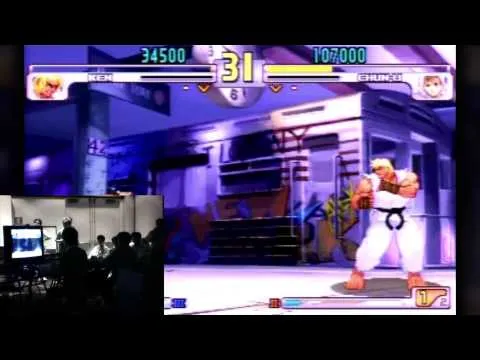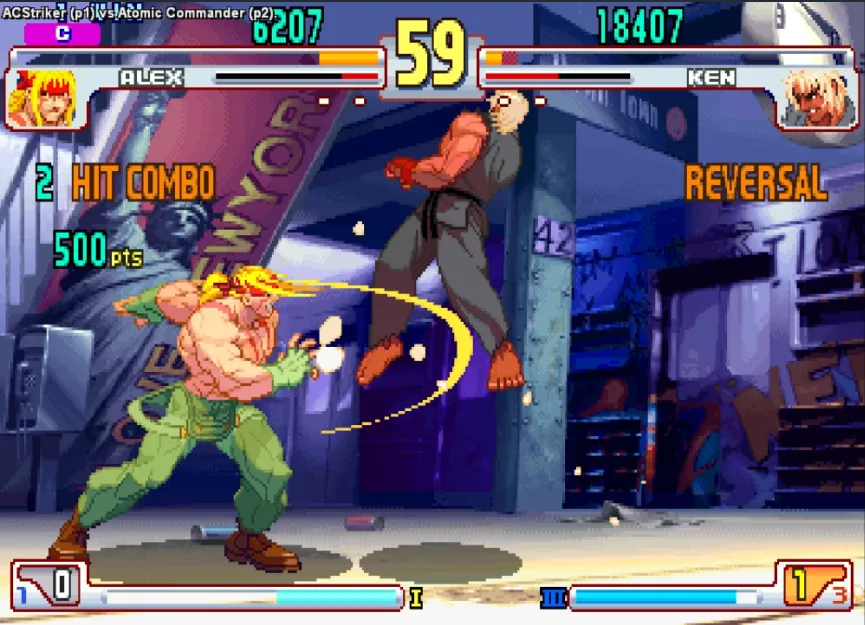

If you have ever heard of this game, then it is likely because of the incredibly iconic "Evo Moment #37", . But what if I told you that this game wasn't as popular back when it was released, and in fact was considered a failure? What could this game, which had a lot of refination in its mechanics, smoothly animated sprites and awesome soundtrack could have done wrong?
...Well, to put it simply, they literally weren't ready for it at that time, between a lot of alienation for the new ideas used, and the fact that during the late 90s, everyone was looking to anything 3D, which caused a rather baffling effect of having most people and the industry disregard 2D games as "junk from the past", even with the higher potential for bigger, more detailed, and better animated sprites, being present through new hardware. Thankfull, the tides of time would definitely change this and have this game go from the "black sheep" of the franchise into one of the most beloved fighting games ever made.
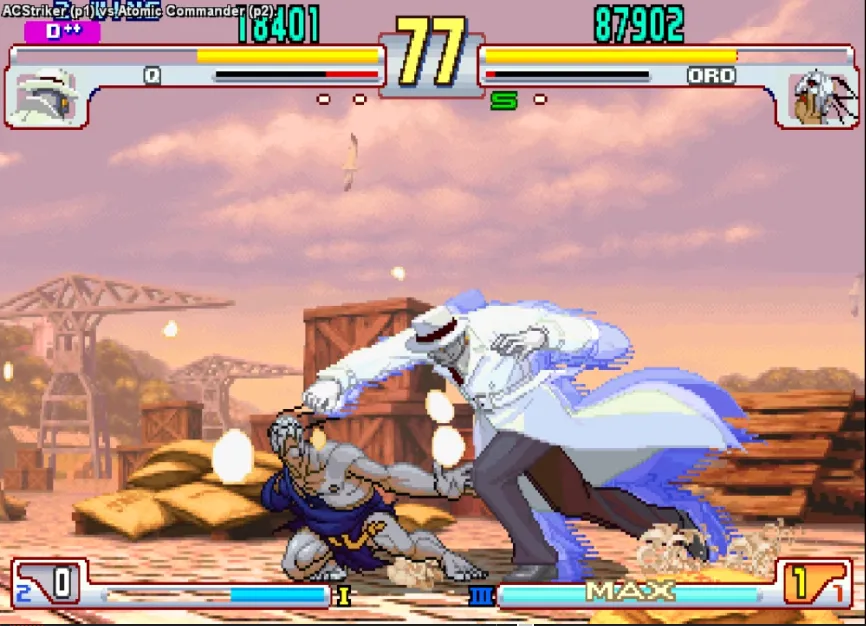
Street Fighter III was quite divisive due to discarding every character other than Ryu and Ken (and even they were planned to be cut at first), leaving people confused at the lack of recognizable characters like Chun-Li, Guile, Sagat and such, and characters with more stylized designs taking their places, and the first variation of the game not being entirely finished also didn't help matters. The parry mechanic, which works by hitting FORWARD when an attack is going to hit you (Blocking is done by going BACKWARDS, and some attacks cause chip damage), can give you faster advantage over certain situations, but it requires you to be very precise, ditch your safety, and have a way to capitalize with a combo if you were parrying a close hit. Back then, it also was not very well received because of how "it made fireballs useless" along with the characters, having to select one out of three supers instead of having all at the same time, and even after two revisions, the last one being 3rd Strike, the game still didn't get to become a huge success like Street Fighter II and Alpha did.
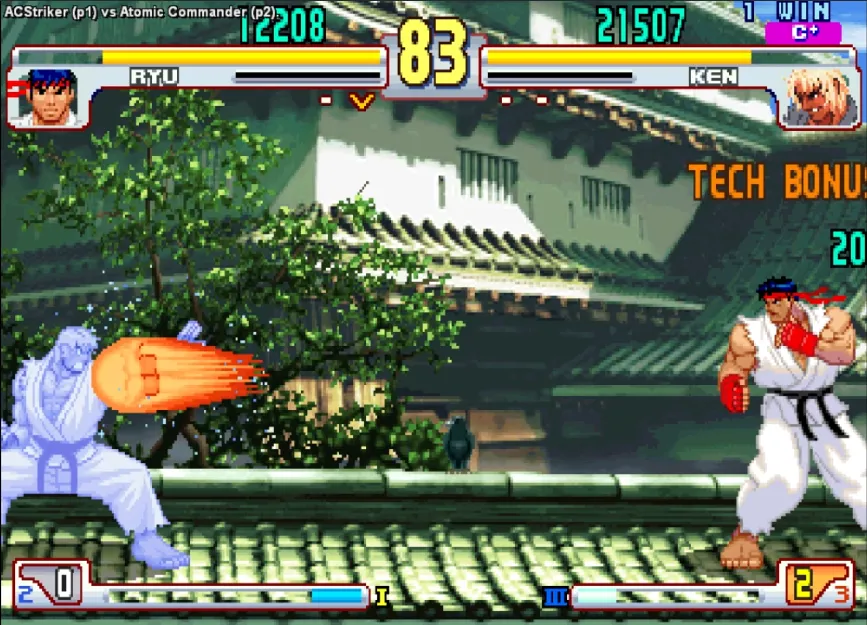
However, not only the EVO Championship Series in 2004 was already helping the game by giving it a spotlight for the strongest players to face each other, but also was the one that featured the Evo Moment #37 (and even the "#37" was even made up as a way to lure people into watching it from the idea of having "the newest moment"...and it somehow worked), and it showed what a player with incredible reflexes and the strict mechanics could do, with Justin Wong unleashing a super attack that would have been a guaranteed death with Chun-Li (since blocking that with no health would kill due to chip damage)...only for Daigo, the Ken player, parrying EVERY hit in the super attack then counterattacking with a perfectly executed combo which did JUST enough damage to kill, making for the most legendary fighting game moment of all time.
As the years went by, with CPS3 emulation being made possible and then the GGPO client being made, this game eventually was playable with rollback netcode on PCs and giving this game a bigger stage for players to rediscover it, along with the 2011 SFIII Online Edition re-release that was developed by the GGPO creators, there was a newfound appreciation for the game, as the notion of "2D stuff being outdated" was vanishing through the rise of emulation, indie games, and people starting to open their eyes into the powerful potential of 2D games with good enough hardware, something that 3rd Strike actually boasted back in 1999. And the avaliability to play this game online pretty easily through any of the rereleases or through emulation makes it very easy to face off with friends and strangers alike (heck, the screenshots I've taken for this are all from some bunch of matches I had today with a buddy on Fightcade).
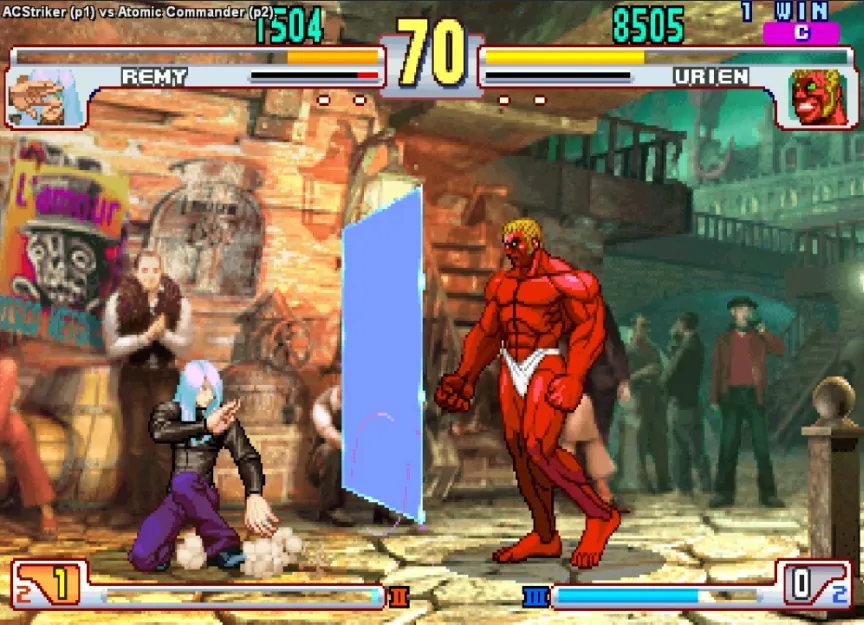
While the first two games had a rather disperse presentation and a lot of unbalanced stuff, 3rd Strike became the "definitive edition" of the SFIII project with a whole new coat of paint, changing the visual, musical and sound design for an "american streets-like" feel, most notable with the new announcer and the new soundtrack, which even had a rap for the Character Select screen! It also added Chun-Li to the roster along with a couple of other new characters. Speaking of characters, there were a few that were somewhat of stand-ins for previous characters, like Remy and Q having charge moves like Guile and Balrog respectively, Necro being the weird stretchy-arms character that Dhalsim was before, and Hugo taking the spot of Zangief as the huge, slow but powerful wrestler. However, every character has their own flair, with unique characteristics (even the ones that have movesets based off other characters), playstyles (Ryu and Ken actually feel different in some moves), and you can tell their personalities through their moves and animations, which are surprisingly smooth and still considered impressive to this day because of the work that must have taken back then.
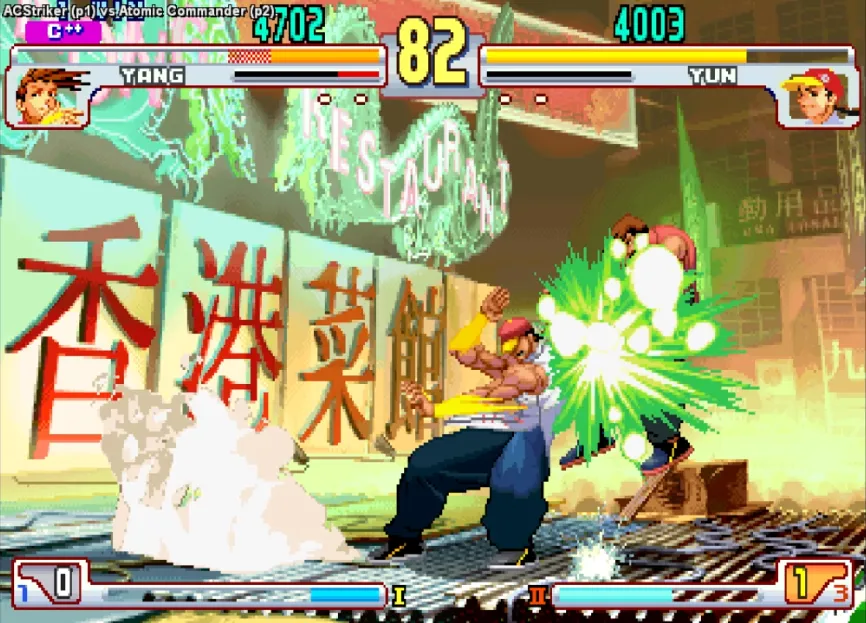
Despite the game being pretty high-level from the complexity of some combos (and how some characters have much more potential than others), as well as the Parry mechanic making some usual fighting game interactions much more different (because again, you can get rid of fireballs with it if used correctly), the presentation is still top-notch, the game feels really solid to play, and it speaks volumes about how this game is still played so much today and talked about in a positive note despite its age, which is a HUGE contrast to how people received it during release, but it is definitely a really deserved comeback what this game got...so yeah, even the "Evo Moment #37" game got its own Evo Moment 37, think about that :)
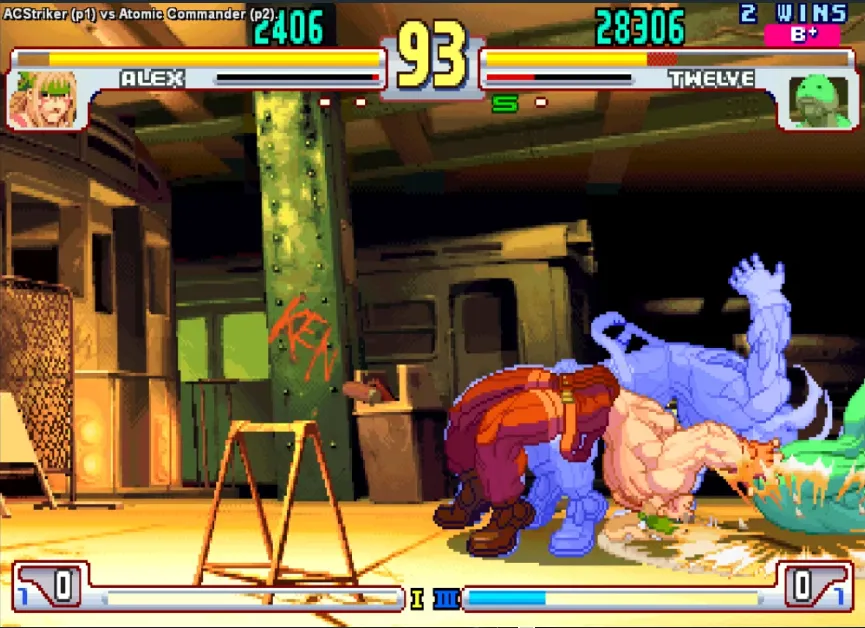

Spanish translation with DeepL. All screenshots were captured by myself.
Español
Si alguna vez has oído hablar de este juego, probablemente sea por el increíblemente icónico "Evo Moment #37", . Pero, ¿y si te dijera que este juego no era tan popular cuando se lanzó, y que de hecho se consideraba un fracaso? ¿Qué podría haber hecho mal este juego, que tenía una mecánica muy refinada, sprites suavemente animados y una banda sonora impresionante?
...Bueno, para decirlo simplemente, literalmente no estaban preparados para ello en ese momento, entre un montón de alienación por las nuevas ideas utilizadas, y el hecho de que durante finales de los 90, todo el mundo estaba mirando a cualquier cosa en 3D, lo que causó un efecto bastante desconcertante de tener la mayoría de la gente y la industria despreciar los juegos 2D como "basura del pasado", incluso con el mayor potencial de sprites más grandes, más detallados y mejor animados, estando presente a través del nuevo hardware. Afortunadamente, las mareas del tiempo cambiarían definitivamente esto y harían que este juego pasara de ser la "oveja negra" de la franquicia a uno de los juegos de lucha más queridos de la historia.

Street Fighter III fue bastante controvertido debido a que descartó a todos los personajes que no fueran Ryu y Ken (e incluso se planeó cortarlos al principio), dejando a la gente confundida ante la falta de personajes reconocibles como Chun-Li, Guile, Sagat y demás, y a personajes con diseños más estilizados que ocupaban su lugar, y a que la primera variante del juego no estaba del todo terminada. La mecánica del parry, que funciona golpeando hacia delante cuando un ataque te va a golpear (el bloqueo se hace yendo hacia atrás, y algunos ataques causan daño de viruta), puede darte una ventaja más rápida en ciertas situaciones, pero requiere que seas muy preciso, te deshagas de tu seguridad y tengas una forma de capitalizar con un combo si estabas parando un golpe cercano. En aquel entonces, tampoco fue muy bien recibido debido a que "hacía inútiles las bolas de fuego" junto con los personajes, al tener que seleccionar uno de los tres supers en lugar de tenerlos todos a la vez, e incluso después de dos revisiones, la última de las cuales fue 3rd Strike, el juego no llegó a convertirse en un gran éxito como lo hicieron Street Fighter II y Alpha.

Sin embargo, no sólo el EVO Championship Series de 2004 ya ayudaba al juego al darle un foco de atención para que los jugadores más fuertes se enfrentaran entre sí, sino que también fue el que presentó el Evo Moment #37 (e incluso el "#37" fue inventado como una forma de atraer a la gente a verlo desde la idea de tener "el momento más nuevo"... y de alguna manera funcionó), y mostró lo que un jugador con reflejos increíbles y la mecánica estricta podía hacer, con Justin Wong desatando un superataque que habría sido una muerte garantizada con Chun-Li (ya que bloquearlo sin salud mataría debido al daño de las astillas)... sólo para Daigo, el jugador de Ken, parando TODOS los golpes del superataque y luego contraatacando con un combo perfectamente ejecutado que hizo el daño suficiente para matar, convirtiéndose en el momento más legendario de los juegos de lucha de todos los tiempos.
Con el paso de los años, con la emulación de CPS3 que se hizo posible y luego el cliente GGPO que se hizo, este juego finalmente fue jugable con rollback netcode en PC y dando este juego un escenario más grande para los jugadores a redescubrirlo, junto con el SFIII Online Edition 2011 re-lanzamiento que fue desarrollado por los creadores de GGPO, hubo un nuevo aprecio por el juego, ya que la noción de que "las cosas en 2D están pasadas de moda" estaba desapareciendo gracias al aumento de la emulación, los juegos independientes y la gente que empezaba a abrir los ojos al poderoso potencial de los juegos en 2D con un hardware lo suficientemente bueno, algo de lo que 3rd Strike se jactaba en 1999. Y la posibilidad de jugar a este juego en línea con bastante facilidad a través de cualquiera de las reediciones o a través de la emulación hace que sea muy fácil enfrentarse a amigos y extraños por igual (diablos, las capturas de pantalla que he tomado para esto son todas de un montón de partidos que tuve hoy con un amigo en Fightcade).

Mientras que los dos primeros juegos tenían una presentación bastante dispersa y un montón de cosas desequilibradas, 3rd Strike se convirtió en la "edición definitiva" del proyecto SFIII con una capa de pintura totalmente nueva, cambiando el diseño visual, musical y sonoro para darle un toque "american streets", más notable con el nuevo locutor y la nueva banda sonora, ¡que incluso tenía un rap para la pantalla de selección de personaje! También se añadió Chun-Li a la lista, junto con un par de nuevos personajes. Hablando de personajes, hay algunos que son una especie de sustituto de los anteriores, como Remy y Q, que tienen movimientos de carga como Guile y Balrog respectivamente, Necro, que es el extraño personaje con brazos extensibles que era antes Dhalsim, y Hugo, que ocupa el lugar de Zangief como el enorme y lento pero poderoso luchador. Sin embargo, cada personaje tiene su propio estilo, con características únicas (incluso los que tienen conjuntos de movimientos basados en otros personajes), estilos de juego (Ryu y Ken realmente se sienten diferentes en algunos movimientos), y se puede decir que sus personalidades a través de sus movimientos y animaciones, que son sorprendentemente suaves y todavía se consideran impresionantes a día de hoy debido al trabajo que debe haber tomado en ese momento.

A pesar de que el juego es de un nivel bastante alto por la complejidad de algunos combos (y por el hecho de que algunos personajes tienen mucho más potencial que otros), así como por la mecánica de Parry que hace que algunas interacciones habituales de los juegos de lucha sean mucho más diferentes (porque, de nuevo, puedes deshacerte de las bolas de fuego con ella si se usa correctamente), la presentación sigue siendo de primera categoría, el juego se siente realmente sólido al jugarlo, y dice mucho de cómo este juego se sigue jugando tanto hoy en día y se habla de él en una nota positiva a pesar de su edad, lo cual es un contraste ENORME con la forma en que la gente lo recibió durante el lanzamiento, pero es definitivamente un regreso realmente merecido lo que este juego consiguió. ... así que sí, incluso el juego "Evo Moment #37" tuvo su propio Evo Moment 37, piénsalo :)


Traducción al español hecha con DeepL. Todas las fotos capturadas por mí.
